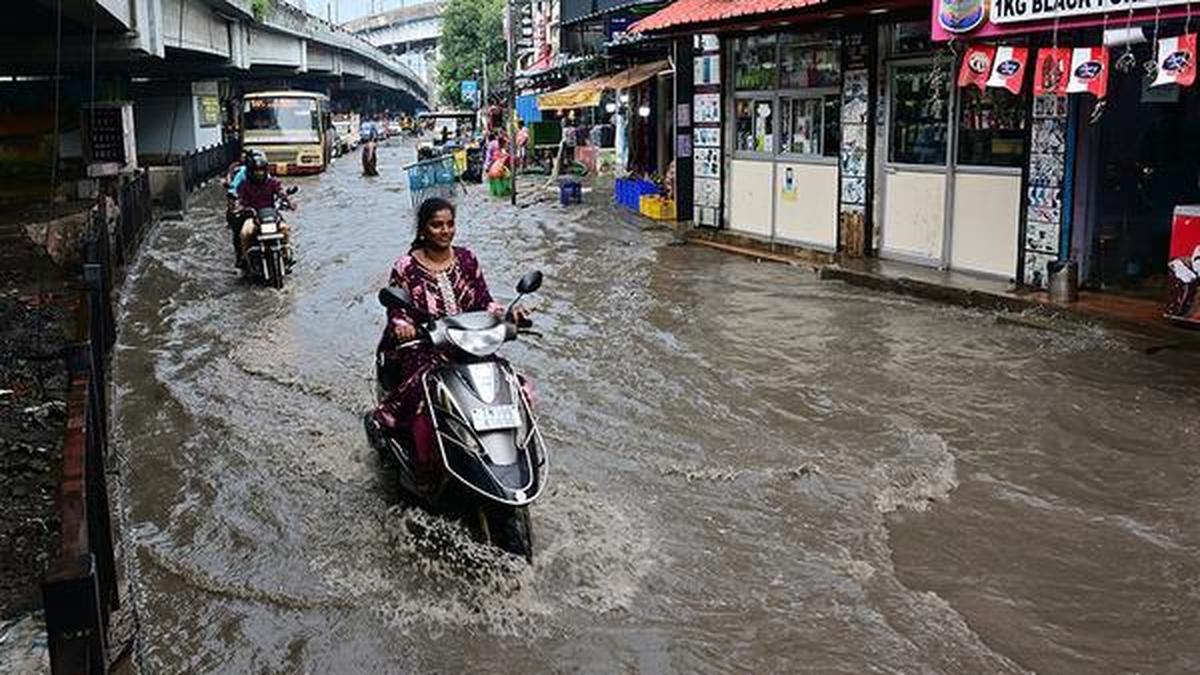ARTICLE AD BOX
Last Updated:October 22, 2025, 07:00 IST
An annual crisis in Delhi-NCR between October and February, the heavy smog caused by air pollution exacts a devastating toll on the health of residents

A commuter with his face covered in cloth rides along a bridge across the Yamuna river in New Delhi on October 21, as smog engulfed the city skyline a day after Diwali. (Image: AFP)
Delhi-NCR is once again in the grip of severe air pollution, a day after Diwali celebrations. The toxic concoction of pollutants from fireworks, vehicular emissions, smoke from stubble burning in neighbouring states, as well as construction dust has left the air quality of the national capital in a “hazardous" state.
An annual crisis in Delhi-NCR between October and February, the heavy smog caused by air pollution exacts a devastating toll on the health of residents – from being a “silent" killer causing long-term lung and heart ailments to wreaking havoc on those already suffering from respiratory diseases.
Like every year, health experts issued urgent warnings saying the effects of inhaling this highly toxic air extend far beyond temporary throat irritation; the damage is systemic, burdening the heart and affecting neurological function.
WHAT IS THE ‘SILENT’ IMPACT?
Experts have cautioned that air pollution’s impact is felt universally, not just by those with pre-existing conditions. Breathing high levels of pollutants silently raises blood pressure. “Almost everyone, whether or not they have asthma, will see a sustained rise in blood pressure at these high pollution levels," said Dr Anurag Agrawal, a pulmonologist and biomedical scientist.
Dr Agrawal said for individuals struggling with uncontrolled hypertension, the effects can be significantly worse while those with heart problems may experience worsening symptoms.
He said the neurological impact is also significant. Exposure to highly toxic air leads to what many residents describe as a “mental fog".
“Headaches, inability to concentrate, and feeling mentally inactive or dull are all part of high pollution exposure," said Dr Agrawal.
It is around intense exposure events, like the heavy use of firecrackers during Diwali, that the crisis peaks. Studies, including those conducted by AIIMS, show consistent spikes in hospital admissions for asthma exacerbations and heart failure during this specific period.
Dr Agrawal further said short-term, intense exposure can be very bad for people with sensitive airways. “An asthmatic can land in the hospital after such exposure," he said.
WHAT ARE THE IMMEDIATE ‘RED FLAGS’?
When air quality is poor, the body has its own mechanism to issue early warning signs that must not be ignored. Recognising these mild to moderate symptoms is the first step towards prevention.
- Respiratory System Distress: Look out for coughing or throat irritation, shortness of breath or tightness in the chest, wheezing (especially if you have asthma or COPD), and an increase in mucus or phlegm production.
- External Indicators: Symptoms include burning, redness, or watering of the eyes, along with a runny or stuffy nose and sneezing.
- General Systemic Effects: Many report a persistent headache, mental fatigue or weakness, dizziness or lightheadedness, and even nausea.
WHAT TO DO IN AN EMERGENCY?
It is crucial to seek immediate medical help when symptoms escalate, indicating severe toxic or prolonged exposure.
You should avail emergency services in any of the following situations:
- Trouble Breathing: If you cannot catch your breath or breathing becomes rapid and shallow, even while resting.
- Chest Pain or Pressure: This is a critical signal demanding immediate medical evaluation.
- Low Oxygen Signs: The onset of bluish lips or fingertips signals dangerously low oxygen levels.
- Neurological Distress: Severe dizziness, confusion, fainting, or becoming extremely weak.
- Asthma Failure: If your prescribed inhaler fails to provide relief or you require it more often than usual.
These guidelines are especially important for children, senior citizens, pregnant women and those with chronic conditions like asthma, COPD, or heart disease.
Pulmonologist Dr Arup Halder stressed on the vulnerability of younger populations, noting that children breathe faster than adults absorbing more pollutants relative to their body size. Protecting their developing lungs must be a priority this season.
Dr Halder said until medical help arrives, individuals must move indoors, seal windows and doors, and use an air purifier with a HEPA filter if available. Crucially, avoid exertion as breathing heavily pulls more toxins into the body.
The News Desk is a team of passionate editors and writers who break and analyse the most important events unfolding in India and abroad. From live updates to exclusive reports to in-depth explainers, the Desk d...Read More
The News Desk is a team of passionate editors and writers who break and analyse the most important events unfolding in India and abroad. From live updates to exclusive reports to in-depth explainers, the Desk d...
Read More
First Published:
October 22, 2025, 07:00 IST
News india Delhi Pollution: Health Symptoms You Must Not Ignore, And When Should You Seek Medical Help?
Disclaimer: Comments reflect users’ views, not News18’s. Please keep discussions respectful and constructive. Abusive, defamatory, or illegal comments will be removed. News18 may disable any comment at its discretion. By posting, you agree to our Terms of Use and Privacy Policy.
Read More

 2 hours ago
5
2 hours ago
5









 English (US) ·
English (US) ·